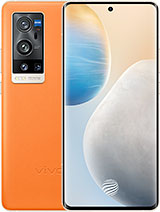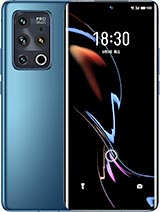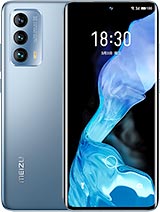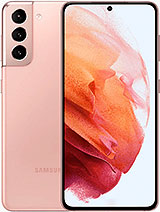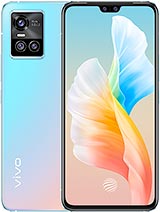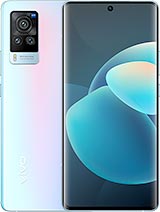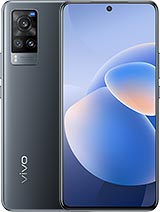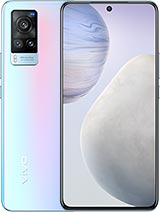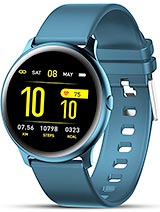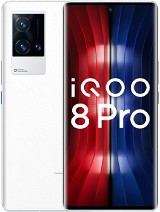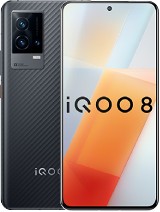SAMSUNG Galaxy S21 Ultra vs VIVO X60 Pro+ camera comparison: the Best two camera phones till date By gizmochina
Hello everyone welcome to gizmo china, I'm Kieran this week. We've got two powerful camera flagships for comparison, the Samsung Galaxy s21 ultra and the VIVO x60 pro plus the first one is Samsung's the most expensive flagship and the second is Vito's the most powerful smartphone till date. The s21 ultra has one of the most versatile camera setups available on a smartphone compared to its predecessor, the galaxy s20 ultra. The most remarkable upgrade is that it offers two telephoto cameras for real three times and ten times optical zooms, with optimized operation after trying different lens combinations on smartphones. We believe that this quad camera setup is currently the best solution on a smartphone in 2021, the evolution of a smartphone camera is slowing down, unlike the crazy increase in the number of camera sensors. In the past few years, we are going to see a trend where brands will be forced to improve existing camera, setups and combinations, and the battlefield will also shift to the quality of video shooting.
No doubt VIVO is the brand that is trying so hard to be the vanguard of this competition, since it's still the only one developing integrated gimbals stabilization for smartphone videography, it's quite brilliant to install the hardware level stabilization in such a tiny space of the camera module so in China, VIVO is calling it stabilization technology as micro, gimbals stabilization system on the x60 pro plus. The latest gimbals stabilization is only available for its 48 megapixel wide angle camera, while the 50 megapixel camera and the 8 megapixel telephoto camera are equipped with the basic is stabilization and the fourth one is the two-time optical telephoto camera, which is basically for portrait uses. In addition, it's worth noticing that VIVO has highlighted the blue logo of mass optics around the camera module to show the camera system was co-developed with the popular lens maker. Well, if I remember correctly, the last smartphone ram to do so was Nokia theoretically, with mass optical coding. The anti-glare, especially for night shooting, should be much better than what we've seen on a phone we'll soon find out.
If that's the case in real life too. On the other hand, the s21 looks more low profile, especially looking at the black variants, rear camera design. But what's remarkable is the large size of each lens. The primary camera uses Samsung's latest 108 megapixel ISO cell hm3 sensor with 12 000 by 9000 pixel grid. It has a non-pixel, Bayer filter pattern that allows for 9 to 1 pixel binning, so the effective pixel size becomes 2.4 micrometers and the resolution 12 megapixels, which is similar to the 12 megapixel resolution of the x60 pro's 4 in 1 pixel grid and probably the gap between their wide angle. Lenses will be much more obvious due to the different resolution and stabilizing technologies.
If you are interested in their camera, specs, here's the full information about their camera setups have a look at them and now, let's look at their samples and start from their main cameras under good lighting conditions. Both models show excellent image, processing prowess with decent clarity and sharp details. At first glance, it's really hard to find out any significant differences. But if you look closer, you will find that the color tones for these two models are slightly different. As it's warm and vivid for the samples shot on the VIVO model, while the s21 ultra sample is more likely to be color, irrespective of the lighting condition, be it early morning or bright afternoon, and in high contrast scenarios, though, both of them were pretty good at presenting decent colors, the VIVO model was able to catch a wider dynamic range with better details, especially around the shadow regions in night.
Shooting. These two models have developed pretty smart, AI recognition for the night scene. So, even though we didn't turn on their night mode, the samples shot under the normal mode were still delightful, with good exposure, but compared to the s21 ultra, the x60 pro plus's main camera has better exposure latitude thanks to the mass optics coating VIVO model's tolerance of extreme brightness is a bit higher than the s21 ultra, and the mass coating is also the reason. VIVO can better solve the glare effect during nighttime, shooting which has become a typical issue for smartphone cameras in extreme low light samples. The main camera of the x60 pro plus had a slightly better white balance and good image pureness with rich details, while the s21 ultra's white balance sometimes failed to give a correct recognition in extremely low light conditions and the samples turned out to be a bit greenish, and then we turned on the night mode on both models.
The improvement for the s21 ultra samples was not so remarkable, but it had slightly better exposure for the brightness. On the other hand, the VIVO x60 pro plus easily activated the extreme night mode and sometimes gave us an overly exposed image, which was so bright that our editor complained that it is not exactly the result we prefer from a nighttime sample. So our suggestion for night shooting on these two models is that unless you want to shoot photos in an extremely low light situation, it's more reliable to use their night modes with AI recognition instead of manually turning on their night modes. In addition to what we mentioned today, both of their cameras support high resolution mode for the s21 ultra. It comes with the amazing 108 megapixel resolution, while the main camera of the x60 pro plus features the 50 megapixel resolution and also supports 100 megapixel resolution using AI processing.
Surprisingly, when we compared the samples from the two phones, they didn't show the resolution gap that we expected instead on the x60 pro plus, both the original 50 megapixel mode and the AI enhanced 100 megapixel mode, were able to produce similar image quality to what we got from the s21 ultra's 108 megapixel mode from their wide-angle lenses. The results are almost the same as what we talked about. In their main cameras, the VIVO models still took the lead with a wider dynamic range and the color difference between their samples is also close to what we saw from their main cameras. It was cooler for the s21 ultra, while the x60 pro plus had a higher saturation, and the purple fringing issue doesn't disappear on both wide angle lenses. Also, thanks to the 48 megapixel resolution, the x60 pro plus was able to output a similar 4 in 1 pixel processing as the main camera.
So the wide angle, samples of the x60 have much better noise control over shadow regions, especially for night shooting. The VIVO phone looks much better with relatively better image, pureness and details. No doubt the wide angle, camera of the videophone won this round and thanks to the gimbals stabilization system, it's much easier to hold the phone firmly and get an excellent night photo during night. Shooting the wide-angle lens on the s21 ultra only features 12 megapixel resolution, so there is no high resolution mode on the Samsung model, but on the other hand, though, the 48 megapixel high resolution is available on the x60 pro plus. We don't really advise you use it.
In most scenarios the high resolution samples lose out on good software processing and look much noisier than under the normal mode. As for their zoom capabilities, the x60 model is equipped with two times and a five times optical zoom lens, while the s21 ultra comes with the three times and another 10 times optical lens. Here. To be honest, we still prefer the zoom combination of the x60 model, it's more practical to cover a zoom range from.6 times to five times with four lenses. The s21 doesn't have a five time- optical zoom lens, which leaves an empty range when jumping from three times to ten times zoom and for vivo the two times zoom camera features 32 megapixel resolution, which allows photographers to apply the high resolution mode, which makes it better for editing while the s21 ultra zoom lenses only have a 10 megapixel resolution.
So if you enjoy portrait shooting with the 50 millimeter focus length, the x60 pro plus is absolutely a better option. But if you like the extreme zoom capacity, then the s21 ultra will give you the best performance over 10 times, zoom photography from the comparison of their 10 time, zoom samples we found that s21 ultra had sharper and clearer images, but the x60 model didn't fall far behind in the race. Meanwhile, if we look at their five time, zoom samples you'll find that the x60 performance is much better than the s21 ultras. As for their video shooting, let's watch some sample shots on these two models. Clearly, the wide angle lens with exclusive gimbals stabilization on the x60 pro plus was dominant during the test.
The image presented on the viewfinder is exceptionally stable, and it feels like we were carrying a gimbals with the phone. However, when you look at the colors, the video shot on the s21 is a bit more delightful. Another important feature worth mentioning is that the s21 ultra supports 8k video shooting capacity, while the x60 series can only shoot up to 4k, but so far it's not a practical feature for most users. Although the s21 can display the real-time image from all of its lenses and users can freely switch between them via the viewfinder, making it easier to choose the appropriate camera mode, you want, if you are a vlogger or a streamer, you know how convenient this feature is. Unfortunately, we didn't find a similar feature on the x60 pro plus, but there was an annoying bug when filming via the s21 ultra, the viewfinder occasionally froze and got stuck for a couple seconds which isn't expected from a top brand camera flagship.
Surprisingly, the stuck frames also made it to the processed video. There are also some details. We cannot show with the video samples, for example, the s21 ultra has a better and smoother stabilizing experience when zooming in during shooting, even when we zoom in to 10 times holding the phone to get a clear image is still pretty easy. One big drawback of the s21 ultra is it's really heavy. As a camera phone.
During the entire testing period, we had to be careful to hold onto the phone firmly in case it slipped from our hand. While there is no such concern about this, with the light and thin x60 pro plus and unlike the metal cover of the s21 ultra, the leather-like back cover of the x60 is better for one-handed grip. So that's it. The video x60 pro plus was really impressive. Throughout our testing period, however, as one of the dominant camera flagship lineups in the market, the Samsung s21 ultra is great, but it didn't bring many surprises over photo and video shooting.
We can easily conclude that the x60 pro plus is the best phone from the brand. So far, even though it's currently limited to the Chinese market, with a starting price of around 774 USD the VIVO x60 pro plus, is much cheaper than the s21 ultra ii, which makes it good value for money. You might have noticed that we didn't talk about the performance in this video. This is because we have covered other aspects of these models in detail in our last video, so make sure to check that out for more information, and if you want to know more about these two models, please leave your comments down below. If you like our video, please give us a thumbs up and make sure you subscribe to our channel and enable notifications that way.
You'll stay updated on everything related to Chinese smartphones and technology. Thanks for watching this is Kieran from gizmo china. We'll see you soon.
Source : gizmochina

